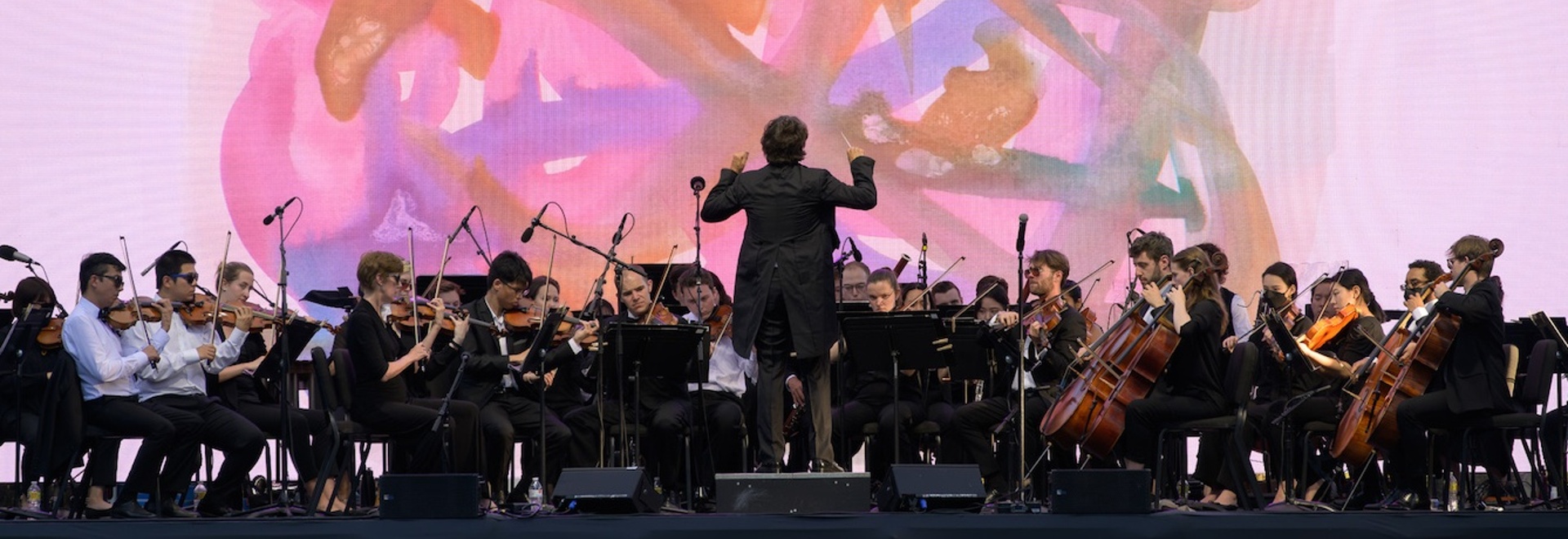

Use the How I See Music Classroom Kit as a resource to complement and enhance your students’ learning through the in-class How I See Music Workshop.
How I See Music began in 2019 as a free interactive hands, ears, and eyes–on arts education learning activity provided by Festival Napa Valley. The program proudly serves 800+ elementary students throughout Napa County each year.
Led by Festival Napa Valley education staff, the How I See Music Workshop is designed to explore ideas of creativity, abstraction, spontaneity, and emotions through music and the practice of the visual arts. It combines a deep listening exercise with the creation of original works of art (small format paintings) by workshop participants in response to listening to a specific piece of symphonic (classical) music. This year’s composition is the American classic, "Hoedown" from the ballet, Rodeo by Aaron Copland.
The Workshop also includes background information about the conductors and the creation of the piece. How I See Music’s delivery and content at the elementary school level is tailored for 3rd to 5th graders.
A selection of the artworks created during How I See Music will be exhibited as large scale projections on the onstage LED screens during the full orchestra performance of the same piece of music shared in class during the Festival’s Summer Season on July 19, 2026 at Charles Krug.
Festival Napa Valley Education Staff will notify the classroom teachers of students whose artworks have been selected for the exhibition, and participating classroom teachers will be invited to attend the July 19 concert as complimentary guests of the Festival.
Follow the checklist to extend and enhance the concepts delivered through the How I See Music Workshop.
Before the Workshop
After the Workshop
Books to Add to Your Classroom Library